On July 4th, I jetted over to B&H to pick up a new(ly used) camera.
I walked out with a
Fujifilm X100T
mirrorless point-and-shoot camera. This is the
story of how I chose that camera, and how I feel about it a few weeks later.
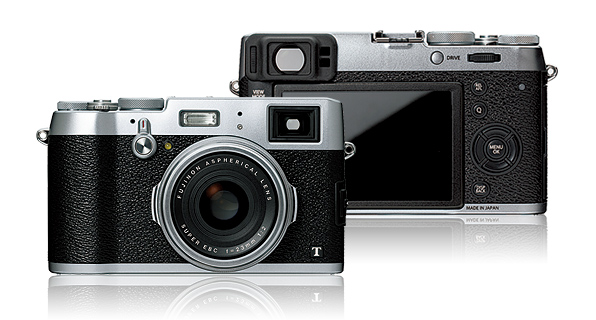
It all begins…
with me staying up until 4 o’clock in the morning one Saturday night. What had
begun as an innocent review of my family photos perversely devolved into a
compulsive episode of researching cameras with which to upgrade said family
photos. Those family photos were recorded almost exclusively with the iPhone 5s
and iPhone 6; yet, once printed, the quality left quite a bit to be desired.
Long story short, I resolved to look at cameras which could fundamentally be used
as drop-in replacements for my smartphone camera; cameras which are portable, light,
fast, usable by lay-people, but yet which produce better results than even the
best modern smartphone cameras. Part of my motivation is that I don’t want to pay
for an entry level point-and-shoot camera which is inferior to a smartphone camera
within its own niche. I still have an old Canon PowerShot SD1100 IS
from circa 2008, and to be honest, although it had decent optics,
its straight-out-of-camera pictures are universally inferior to what my iPhone 6
produces, in nearly every situation.
With that said, my criteria for a camera were:
- Must auto-focus relatively quickly. If it spends too long hunting or re-focusing,
it’s unacceptably slow. I’m not shooting kids’ sports games with this but I
shouldn’t be missing indoor party shots either.
- Exposure, saturation, white balance should be good straight-out-of-camera. I am
not interested in post-processing every photo a camera takes because the sensor
was bamboozled by tricky lighting.
- Depth of field should range from shallow to deep, in order to take a variety
of shots.
The contenders
After surfing the net, reading some Ken Rockwell
and
Digital Photography Review,
my final list consisted of the following cameras:
- Sony RX series (especially the
Mark III
, which is most aligned with my price range)
- Ricoh GR Series Mark II
- Fujifilm X point-and-shoot cameras
- The
X70
for a more compact form-factor and lower price
- A used
X100T
as a splurge for a very versatile camera
With these cameras in mind, I journeyed to B&H bright and early that Independence
Morning to size up the cameras in person. These are my in-store impressions.
Sony RX Series
The RX series is one of the most outstanding high-end point-and-shoot cameras out
there. The aperture can result in some outstanding portraits and its zoom makes
it surprisingly versatile as an ultra-portable portrait camera.
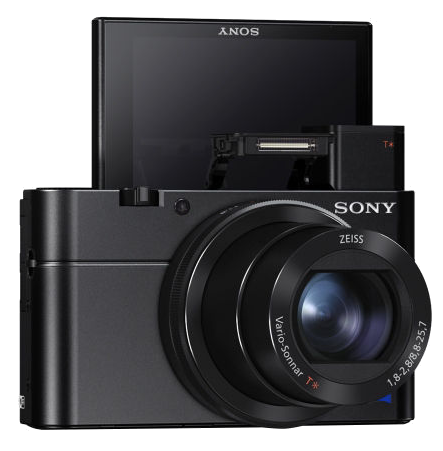
However, in the store, I wasn’t thoroughly impressed with the photos that I was
seeing on the LCD. (I know, the LCD displays aren’t always the best, but short
of taking the camera home, that’s all I had to go by.)
That’s not to say that the photo quality was bad. I thought it was fairly
accurate. But I preferred the images generated by the Fuji(s) and Ricoh.
Ricoh GR Series
The GR series is a small but powerful competitor to the Sony RX series. The size
and weight are very similar to the Sony, but with far more flexible aperture
than the Sony (as well as a much more svelte interface and in-hand feel).
I found the pictures it took to be quite pleasant, and definitely would recommend
this to friends. However, I passed in favor of a Fuji.
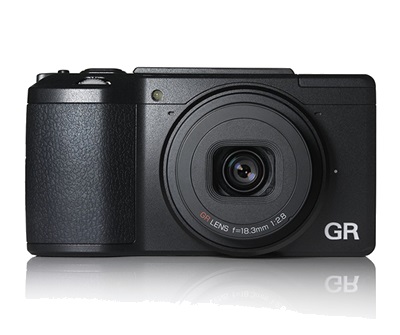
Fuji X70 and X100T
The Fuji X70 cost about $100 more than the Ricoh, and is slightly less portable
(in that it doesn’t fit into the average pocket). However, it has a fully articulating
LCD display and more knobs and dials than either the Ricoh or the Sony (which
appeals to my engineering background). Somehow, almost all the JPG’s out of the
camera have amazing color balance and softness for shooting portraits (while
still doing a decent job at shooting in other day-to-day situations and macro).
Although I liked the overall package and value of the X70, I ended up splurging
for the X100T (used), the big brother of the X70. Although the X100T doesn’t have
an articulating LCD display, it has a larger sensor and an optical viewfinder
which appeals to the way I “grew up” taking photos. This wouldn’t have been an
easy decision had I not meticulously looked up opinions by Kevin Mullins,
a British wedding photographer, and Paul Carmody, a British street photographer.
I ended up choosing the X100T because I liked the idea of shooting 35mm (equivalent)
and having an optical viewfinder.
X100T technical review
I should preface this technical review by disclaiming that
I’m a hobbyist who probably over-indulged in his eagerness to get back into photography.
All opinions are my own, formed after some discussions with friends and a few
weeks’ use.
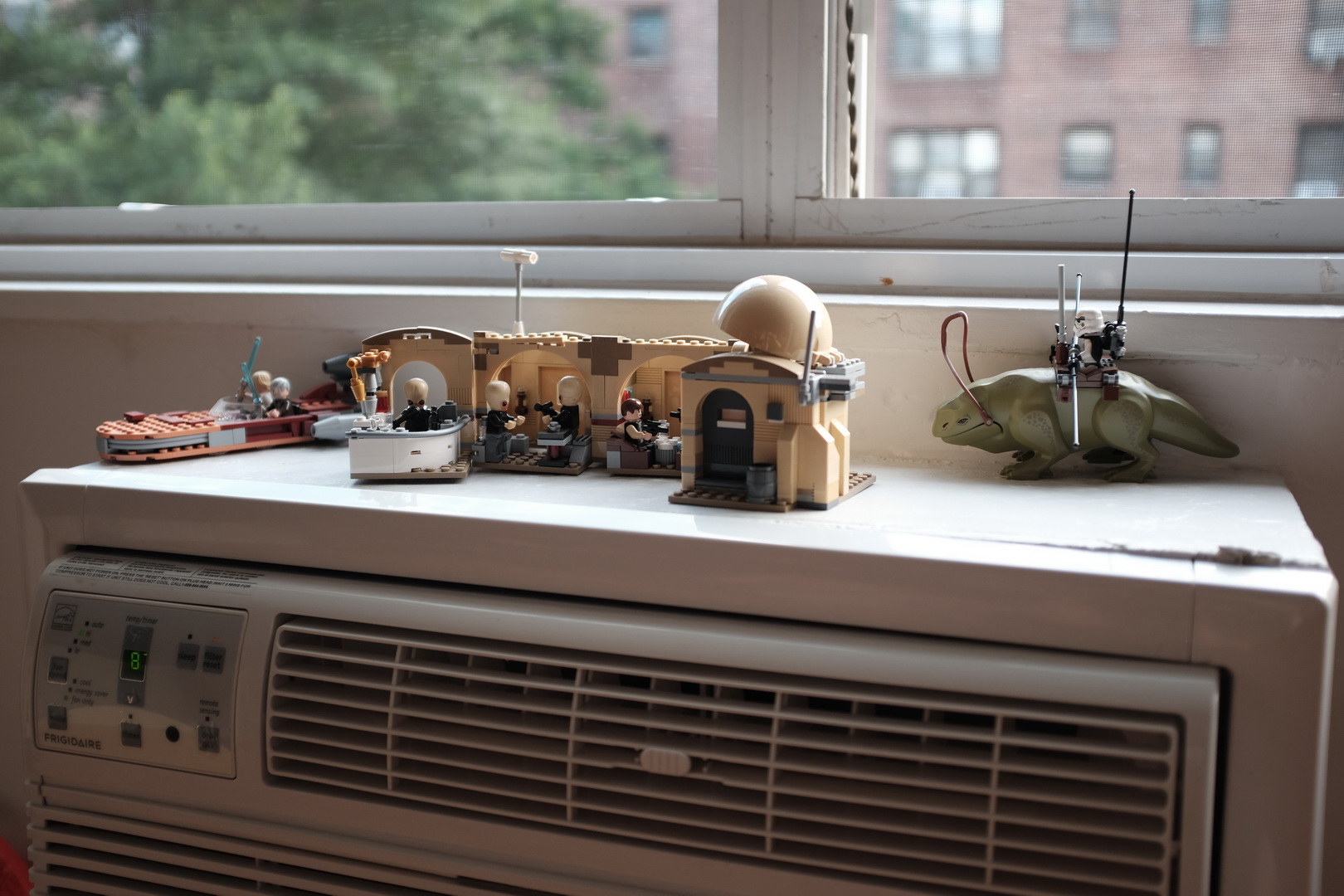
It’s been about five weeks now that I’ve had this camera. I’ve been taking it
with me on my daily commute several times a week; recorded some family outings;
shot a friend’s holiday party; created momentos of some work outings;
and taken it on a trip across the country. I wouldn’t dare say I’m an expert
with this camera, but I believe I’ve put it through its paces as well as I could
expect.
Image quality
The image quality out of this camera is generally very pleasant for casual
portraits, family functions, and even street photography. The lack of an optical
zoom mandates/promotes a more intimate photography style marked by approaching
subjects and filling the frame with them. In turn, this camera rewards the
intimacy with well-balanced, people-friendly photos, without much effort at all.
The aperture range from f/16 to f/2 permits a fair amount of shooting flexibility,
such that candid scenes can be made as easily as portraits. And the large aperture
enables decent shots to come out even in soft-lit indoor spots (like bars), while
the ISO looks reasonable up until 3200.
On the other hand, at f/2, softness can creep into shots, so it can sometimes
be worth taking a hit on the noise with a higher ISO to avoid getting too much
softness in shots with the large aperture.
JPG quality
The JPG quality straight-out-of-camera is jaw-droppingly good. There’s something
viscerally satisfying about cold-approaching someone on the street, asking to
take a portrait of them, and instantly showing it off. It’s hard to imagine any
other camera taking such consistently good portrait shots with such little effort.
Even in “tough” situations with poor lighting or tricky dynamic range, the camera
processor will often thread the needle and choose reasonable contrast, noise reduction,
saturation, and dynamic range, to quickly produce a JPG which meets the bill.
Even more striking is how difficult it can be to reproduce some of the tricks the
JPG engine is producing, even with the RAW files!
RAW Quality
The RAW files produces by the Fuji seem workable enough, although some caveats do
seem to apply:
- I shelled out $50 for ACDSee Pro recently, and I was dismayed to realize that
its RAW processing for the Fuji is strictly inferior to the stock RAW processor.
- The SilkyPix RAW Converter
which comes with the camera has a goofy interface, but it’s actually fairly
usable, and produces solid results. I generally respect the recommended
settings unless I have something particular in mind I want to produce from the
RAW file before exporting JPG/TIFF.
- I’ve heard LightRoom has finally gotten decent Fuji RAW support, although I
can’t speak to that.
- The RAW files obviously don’t have as much in the way of in-camera processing
as the JPGs do. In some tough lighting situations, I find myself torn between
the JPGs which have higher noise/saturation/contrast but strong eye-appeal
and the RAW files processed through SilkyPix and then run through a filter bank.
In practice I will only pull out the RAW workflow when I’m really disappointed
with the JPG, due to the poor return-on-invested-time on developing the RAW
to the point where they surpass the JPG.
Film simulation
One of Fuji’s claims to fame (which predates me by a decade or three) is its rich
film heritage. Fuji has done a good job providing some film simulation presets
for the JPG files produced, allowing the rendering of some presets
(like Instagram filters but not repulsively overdone) using the RAW sensor
information. Reviews online cover the salient details, and I’ll add/repeat my
two cents here:
- The stock color mode, “Provia”, produces solid and consistent portraits and is hard to go
wrong with.
- There’s a Kodachrome simulation called “Classic Chrome”, which seems to soften
the contrast and slightly desaturate photos. The Star Wars Lego diorama above
and the garden balcony below
were shot in Classic Chrome to evoke nostalgia and warmth.
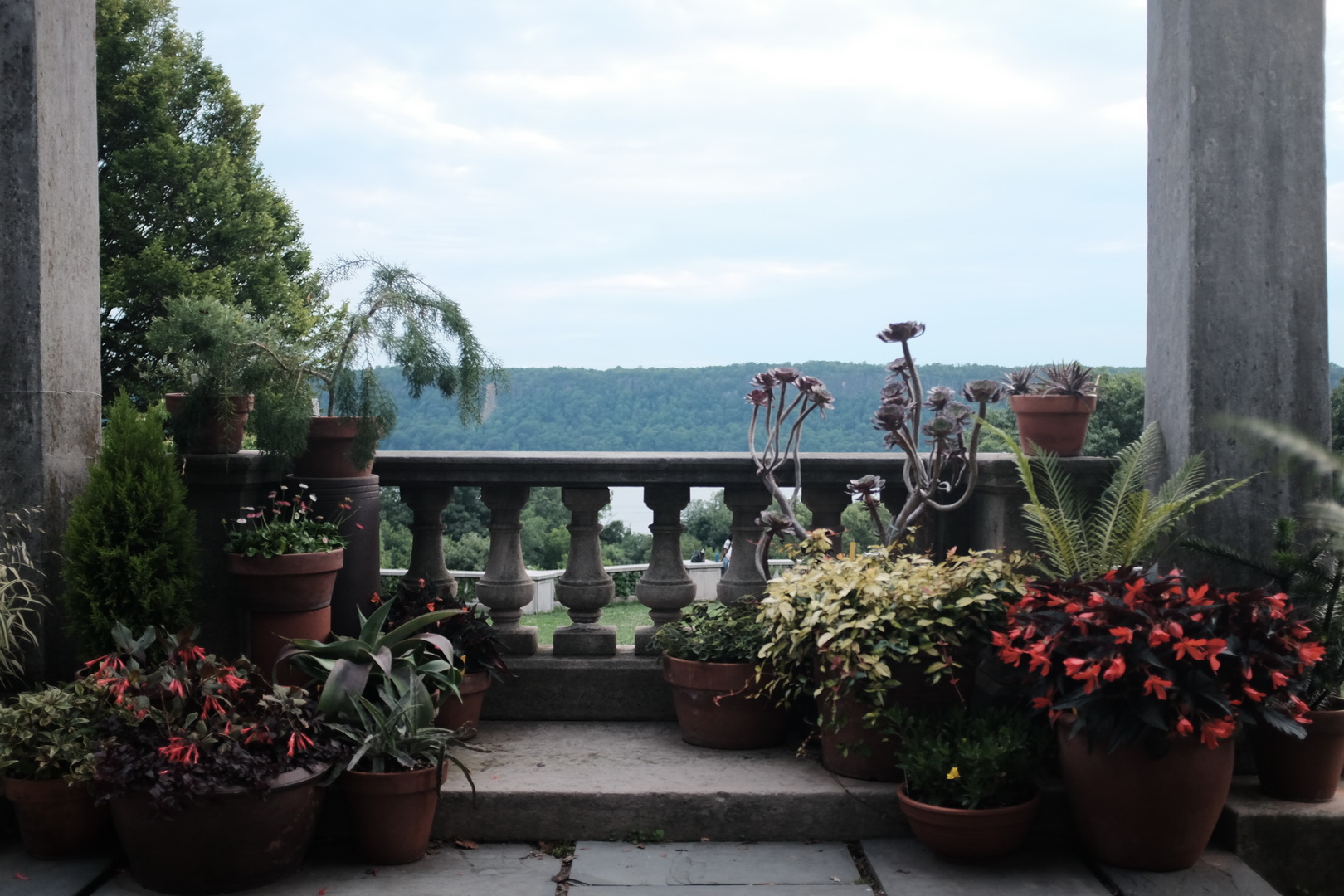
- There’s a vivid mode called “Velvia”, which seems to mostly boost the saturation.
I might pull it out for shooting gardens and flowers but otherwise I’m not sure
whether I’d rather use this or the standard preset.
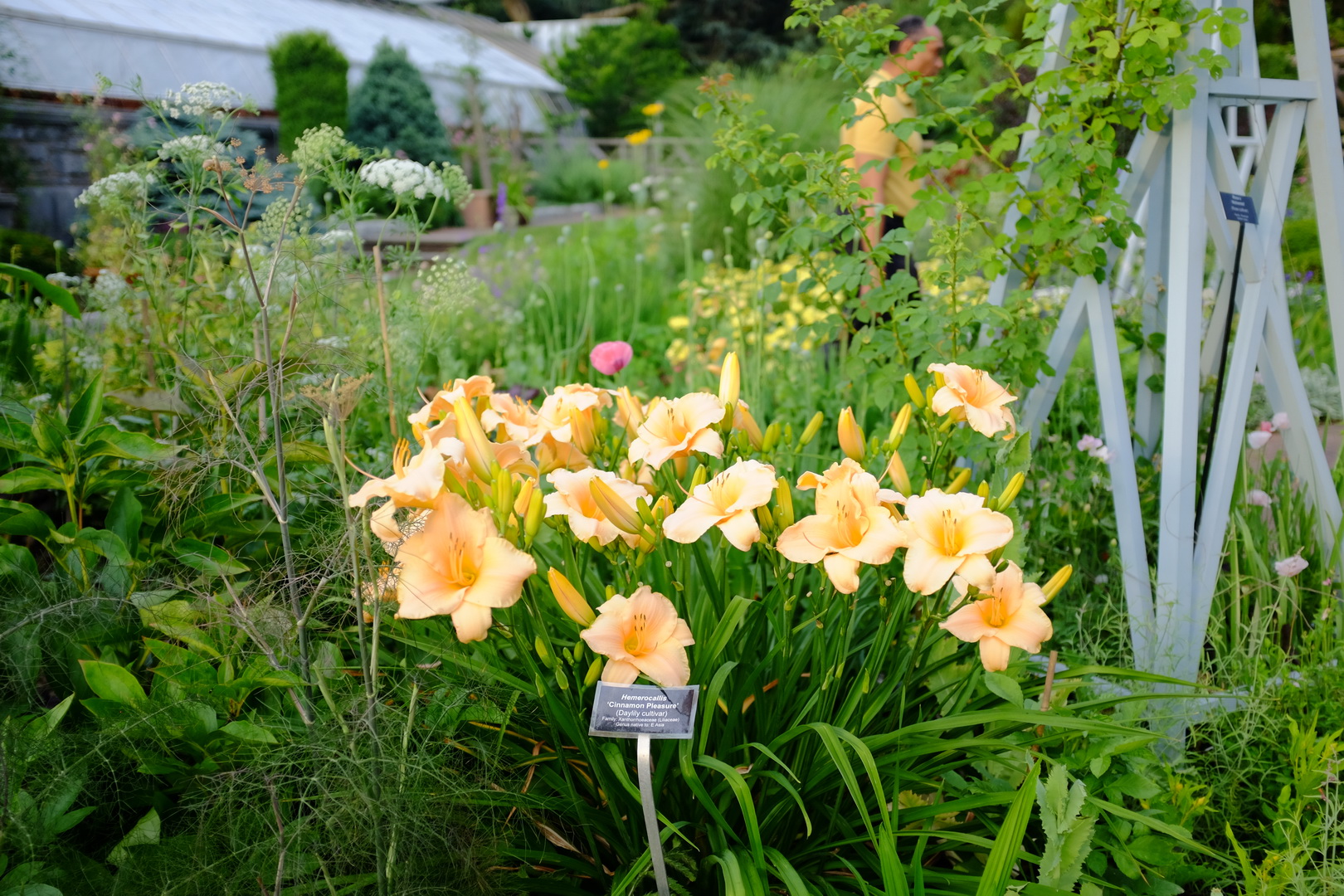
- There are four variations of monochrome: regular, and green/yellow/red, for
portraits/moderate contrast/high contrast, respectively. I sometimes bounce
between them depending on my purpose, but I most often use regular monochrome
unless I know I’m shooting B&W portraits. These are excellent for street
photography, where a timeless feel can make more of a scene than color.

Macro quality
I’d say that the macro shots that this camera are objectively respectable, and
for the size of the camera, exceptionally good. While they won’t compete with
images produced by full-frame cameras, they can definitely hold their own.
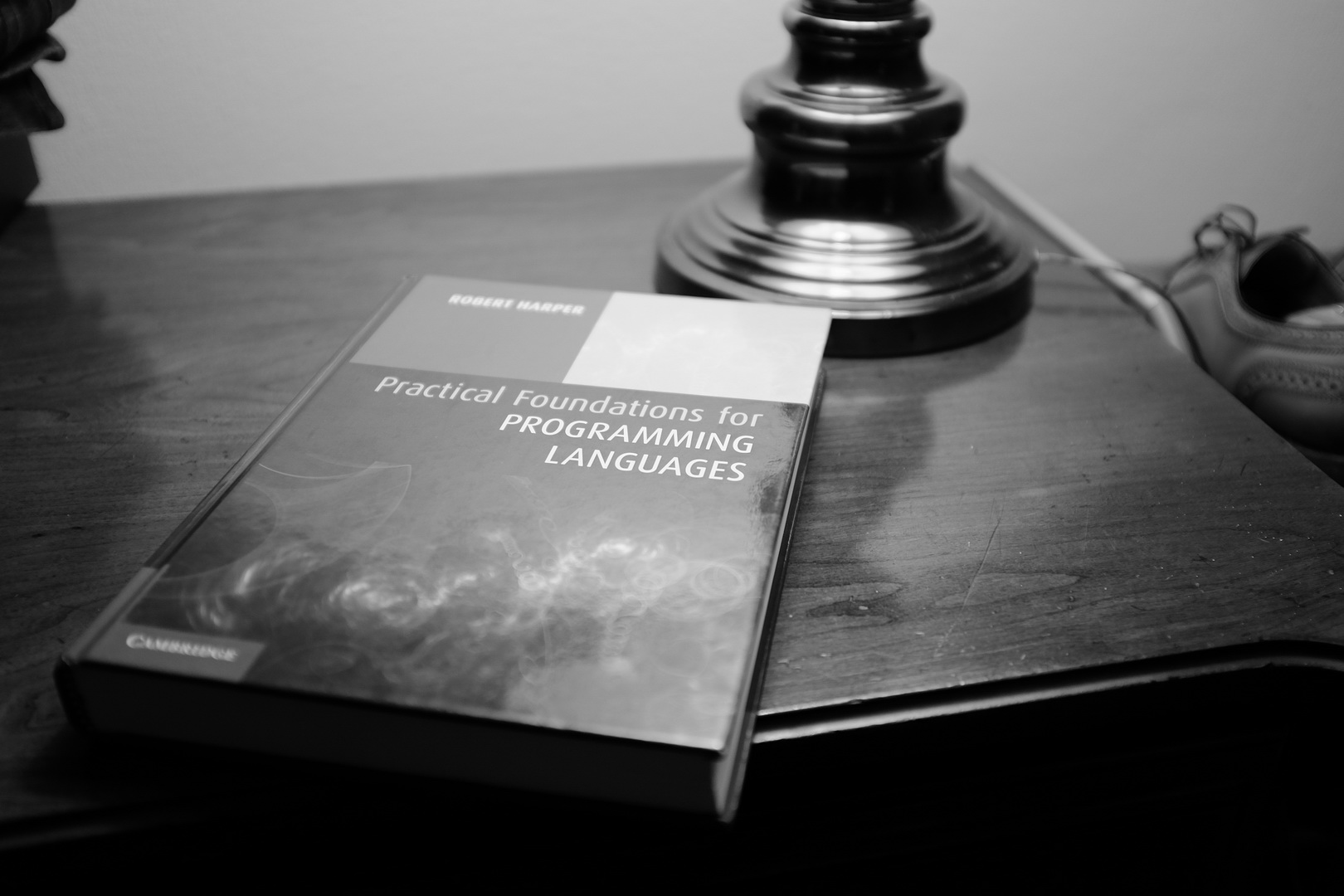
This camera has a nice feature which does not exist on DSLR’s, called
“contrast peaking”, a nifty technique wherein the camera takes the digital image
and superimposes bold-colored lines upon a B&W cropped foreground preview
for the contours of objects which are
estimated to be in focus by the camera sensor.
Although this sometimes breaks down in poor lighting, the utility is extremely
handy, and produces results which simply are impossible with smartphone sensors.
X100T Quality of Life review
In my limited time with it, this camera has produced some incredibly strong pictures
(especially portraits and macros), but also sometimes performed questionably in
situations where it should have had an easy time. I’ll try and break down some
of the holistic features and failures of the camera, as I see it.
Aesthetic charm
The first thing anyone notices about this camera – indeed, for many, its primary
draw – is its charming retro look, which cleanly juggles old-school aesthetics
with modern features.
Although some might dismiss the facade as gimmick, it ironically is itself a feature.
Nobody on the street or at parties that I’ve met (who isn’t themselves a photographer)
has realized that this is a modern digital camera, and not an ancient film shooter.
The innocuous appearance and charming facade disarms people, making them more relaxed
and receptive than they’d be for an alien, weapon-like telescoping DSLR.
I was recently wandering around the Pike Place market in Seattle before dusk,
attempting some street photography. Once there, however, I realized that quite a
few people were lounging about enjoying the sunset, and that I had an opportunity
to cold-approach some soon-to-be friends for portraits. Not one person declined
me, and some even struck me up in conversations about photography and cameras!
Rather than throwing up a wall between us, the camera’s facade tore one down!

Size and portability
This camera is a true dynamo and I obviously bought it with the express purpose
of having it with me wherever I went and whenever I felt like shooting. It’s
small enough to fit into any bag (but not most pockets), and I can easily fit it
into a bag or suitcase without having to sweat the room and weight it occupies.
Quick access controls
A major reason for purchasing this camera was its preponderance of quick-access
controls for the savvy photographer (or me). I love that it has analog dials for
aperture and shutter speed, which help me quickly adjust to changing light or
environments without digging through menus. The manual focus dial on the lens is
also a nice touch for macro shooting. There are seven user-programmable function
buttons, some of which are more necessary than others:
- It seems to be impossible to launch the video recorder without a function
button. I seldom want to record video on on a point-and-shoot camera, but just in
case the mood hits me, I have this assigned to the left arrow button.
- ISO adjustment is something that I like to keep an eye on because I dislike
thinking in terms of exposure compensation. I have this assingned to the top
function button adjacent to the shutter button.
- This camera has a respectable flash used for fill flash primarily during daytime
photography. In dark, ambient environments (like bars) I prefer jacking up the
ISO to avoid shocking people with flashes, but in the daytime I have no choice
but to introduce more light to counter harsh shadows. I have the flash setting
assigned to the top arrow button for quick access (for forcing or disabling).
I don’t assign flash compensation to a button because I typically leave it at
-2/3.
- Although I haven’t gotten much use out of it, I’ve assigned the neutral density
filter to the arrow down button.
- There’s a WiFi server built into this camera. I’ve left it at its default location.
It’s nice to have but is a bit sluggish to initialize from a smartphone,
and having it be quickly accessible ameliorates the issue.
AF hunting
More than once, however, I’ve noticed that the camera can struggle to figure out
where to focus, even with face detection on. I’ve experimented with and without
facial detection, and either way, the camera seems to miss more often than it
should. Perhaps I simply need to pre-expose every single portrait, but I would
assume that in certain circumstances, the camera should be able to figure out
who is the subject and focus on them.

Somehow the camera didn’t see me right here and instead appeared to focus on the sand behind me.
Mediocre video recording
The reviews online complain about the poor video capture here, and they’re right,
this is definitely not a strong suit of this camera. I attempted this a couple of
times while at the Jazz Alley in Seattle, and had iffy results
both times.
A nifty jazz band was doing covers of Al Green, and knowing someone special who
would enjoy the performance, I attempted to record a brief video of it. Although
the audio came out fine, the camera kept hunting for the focus point. Over the
course of the video, the autofocus adjusted itself a couple dozen times, losing
track of the band each time, sometimes until the next adjustment!
Thankfully, a home video recording of a sopng cover is not a cherished memory
which requires high fidelity video recording. But the experience does not inspire
faith. If I had to choose between using this camera to shoot photos or video of
a cherished moment, I’d choose photos hands down every time. (And that’s okay!
But be forewarned if you attempt to record video.)
Concluding thoughts
Now that I’ve had the camera for a few weeks, I think I know it fairly well. I’d
say that in my situation and circumstance as a hobbyist knowledgeable in the
generalities of photography exposure and keen on a generalist travel camera, this
camera fit the bill and then some. However, I definitely wouldn’t argue that this
is the best camera out there, and certainly not for a budget-constrained photographer.
Recently, some others asked me for my (poorly informed) opinion on good cameras
for travelers or general family photography. To them, I’d say this:
- If cost is an issue, consider used cameras.
- The Ricoh GR in my opinion is probably the best bang for the buck if cost is
an issue. It has a good range of apertures and is extremely portable and usable.
- If cost is not an issue and optical zoom is a priority, the RX series is the
only real choice. It didn’t make sense for me because I don’t usually care for
zoom and I like having better light sensitivity, but it might make sense for you.
- If cost is not an issue and/or you thought the photos posted here were impressive,
then maybe a Fuji X100 series camera is right for you!